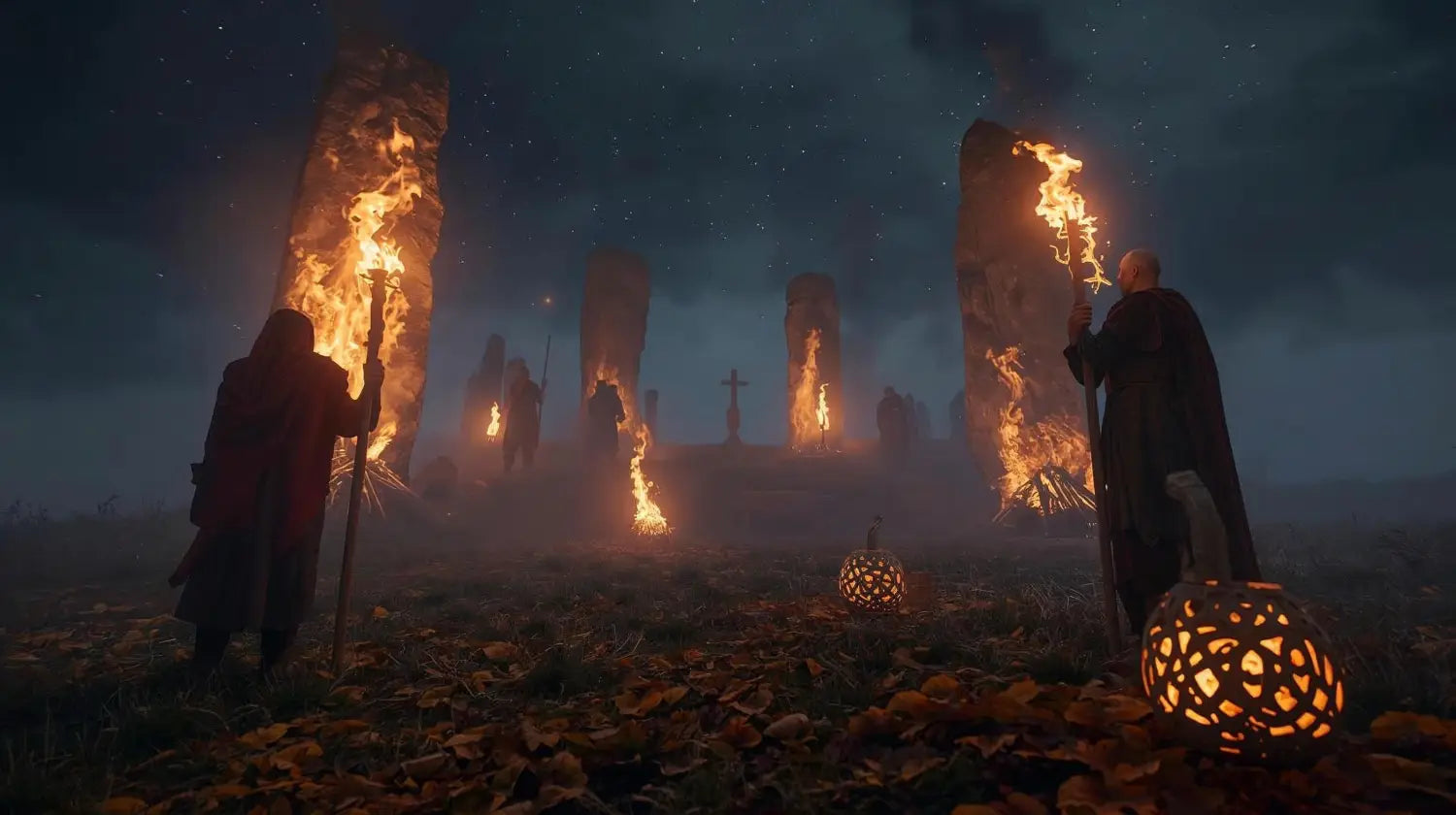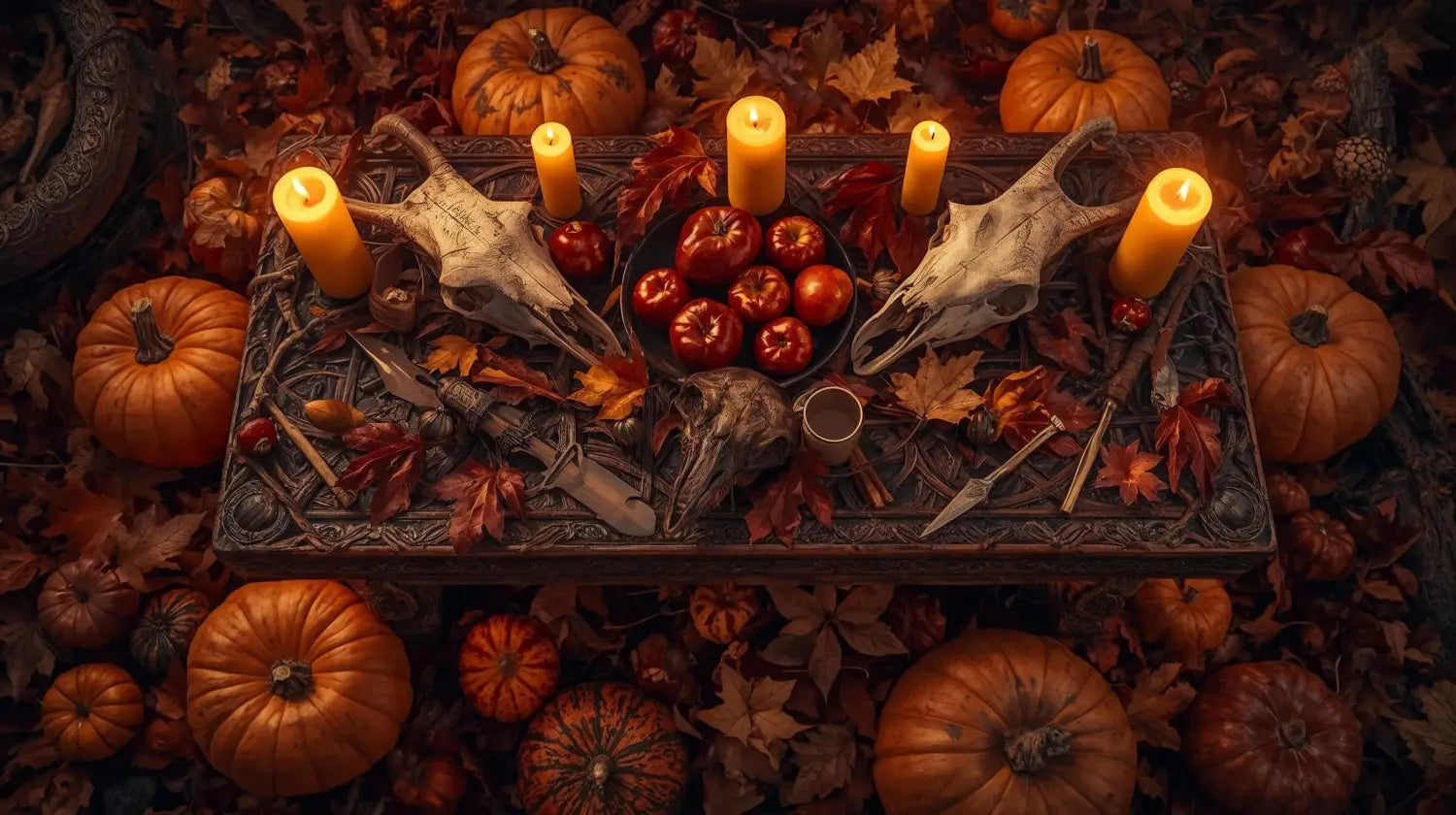As October wanes and the air cools, a powerful moment arrives — the ancient Celtic festival of Samhain. Long before Halloween became costumes and candy, Samhain marked the end of the harvest and the beginning of winter, a sacred time when the Celts believed the veil between the worlds grew thin.
The Origins of Samhain
Over two thousand years ago, the Celts of Ireland, Scotland, and Wales celebrated Samhain (pronounced “Sow-en”) as one of their most important fire festivals. It signified the turning of the year — the transition from the season of life and light to the dark half of the cycle.
Communities gathered to honor their ancestors, to give thanks for the harvest, and to prepare for the hardships of winter. Livestock were brought back from summer pastures, and great bonfires were lit on sacred hills to ward off evil and guide the spirits of the dead.
A Night When Worlds Collide
Samhain was believed to be the night when the spirit world and the mortal world overlapped. Spirits of the dead, deities, and beings from the Otherworld could cross into the realm of the living. People left offerings of food and drink for wandering souls and wore disguises or masks to protect themselves from malevolent entities — a tradition that still echoes in modern Halloween costumes.
It was a night not of fear, but of respect for death and the unknown — a time to remember that all life moves in cycles, and endings are but new beginnings.

Fire and Renewal
At the heart of every Celtic Samhain celebration burned the sacred fire. In ancient Ireland, enormous bonfires were lit at places like Tara and Tlachtga, symbolizing purification and unity. From these flames, people relit their home hearths, carrying the fire of renewal into the dark months ahead.
These rituals connected the people to the gods, to nature, and to each other — an ancient rhythm that honored both life and decay, warmth and cold, light and shadow.
Samhain Divination and Ancient Magic
Samhain was also a night of divination and prophecy. Because the barrier between worlds was thin, the Celts believed that messages from the gods or ancestors could be more easily received. Apples, nuts, and mirrors were used for fortune-telling rituals — precursors to the “Halloween games” we know today.
Farmers sought omens for the coming year, while young people performed love divinations to glimpse their future partners. These customs show that Samhain was not a night of horror, but of connection — between past and future, spirit and flesh, destiny and desire.
From Samhain to All Hallows’ Eve
When Christianity spread through Celtic lands, many pagan traditions were absorbed rather than erased. In the 9th century, the Church declared November 1st as All Saints’ Day and November 2nd as All Souls’ Day, days dedicated to honoring the dead. The evening before became known as All Hallows’ Eve, eventually shortened to Halloween.
The bonfires, offerings, and ancestor veneration survived under new names. Though the Church reshaped the meaning, the spirit of Samhain endured, continuing the old reverence for death, memory, and transformation.
The Journey Across the Seas
The modern Halloween celebration emerged when Irish and Scottish immigrants carried their Samhain customs to North America in the 1800s. There, new traditions merged with old — turnip lanterns became carved pumpkins, and community gatherings replaced rural fire festivals.
Over time, the sacred became social — bonfires turned into parties, offerings into candy, and disguises into costumes. Yet, within every glowing jack-o’-lantern, the ancient fire of Samhain still burns.
Modern Samhain: A Living Tradition
Today, Samhain is once again celebrated by modern pagans, druids, and nature-based spiritualists as one of the eight Sabbats of the Wheel of the Year. It represents both the final harvest and the spiritual new year — a time to honor ancestors, reflect on mortality, and embrace transformation.
Rituals may include lighting candles for the dead, holding ancestor feasts, meditating by the fire, or spending time in nature as the earth rests. Altars are often decorated with autumn fruits, skulls, and photos of loved ones, symbolizing remembrance and renewal.
In truth, Samhain has never died — it has only evolved. From stone circles to city streets, from sacred hills to candlelit windows, the old magic of the season continues to flow through the heart of the world.

The Meaning of Samhain Today
Samhain teaches us to honor endings without fear — to see death as transformation and darkness as a necessary part of balance. It reminds us to pause, to remember where we came from, and to light a fire within that carries us through the winter.
So as Halloween approaches and the nights grow long, remember the roots beneath the celebration. Beneath every costume, every candle, every flame, the same truth still whispers:
The wheel turns. The old year dies. And from its ashes, the new is born.
